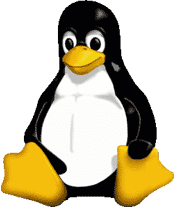Linux is an operating
system whose development is part of a larger counter movement that
includes the Free Software Movement. This larger counter movement
holds the promise of three radical innovations: a changed price
structure for software that runs on desktop computers so as to
significantly lower the long term or total cost of ownership (TCO);
a contrarian rationale for copyright;
and an end to the monopolistic marketing practices that control much
of current software development. In 2004, Market researcher IDC
reported that
Linux had grabbed 3.2% of the desktop market in 2003 and would double
that figure by 2007. In fact their desktop market share hovered around 1.3% at the end of 2007 in contrast to Windows with 92% and Macintosh with 7%.  It's initial price point (free) suggests that Linux
developments and
critiques
(July 7, 2004) be monitored closely by educators.
It's initial price point (free) suggests that Linux
developments and
critiques
(July 7, 2004) be monitored closely by educators.
One significant claim to fame occurred in 2005 when it was designated as the operating system for the $100 computer (One Laptop Per Child) project. From this development, the concept of a netbook (Wikipedia) emerged, creating a market for a small, super-portable inexpensive laptop. Of the global market for netbooks, about 30% (Vaughan-Nichols, Computer World, April 8, 2009) run the free Linux OS. Telephone companies sell netbooks with WI-FI and cellphone technology in them. Linux is also the operating system of many cell phones.
Several versions of Linux can be compressed and setup so that it be run from a USB drive (memory stick). ChannelWeb (2009) noted the four best: Pendrivelinux2008; Crunchbang; Mint 6 Felicia; and Ubuntu.
For an example of the Linux variations, watch this brief YouTube overview of the how the Ubuntu desktop operates and note the similarities to Windows and Macintosh operating systems.
Updated: January 9, 2010 Chapter One | Page author: Houghton